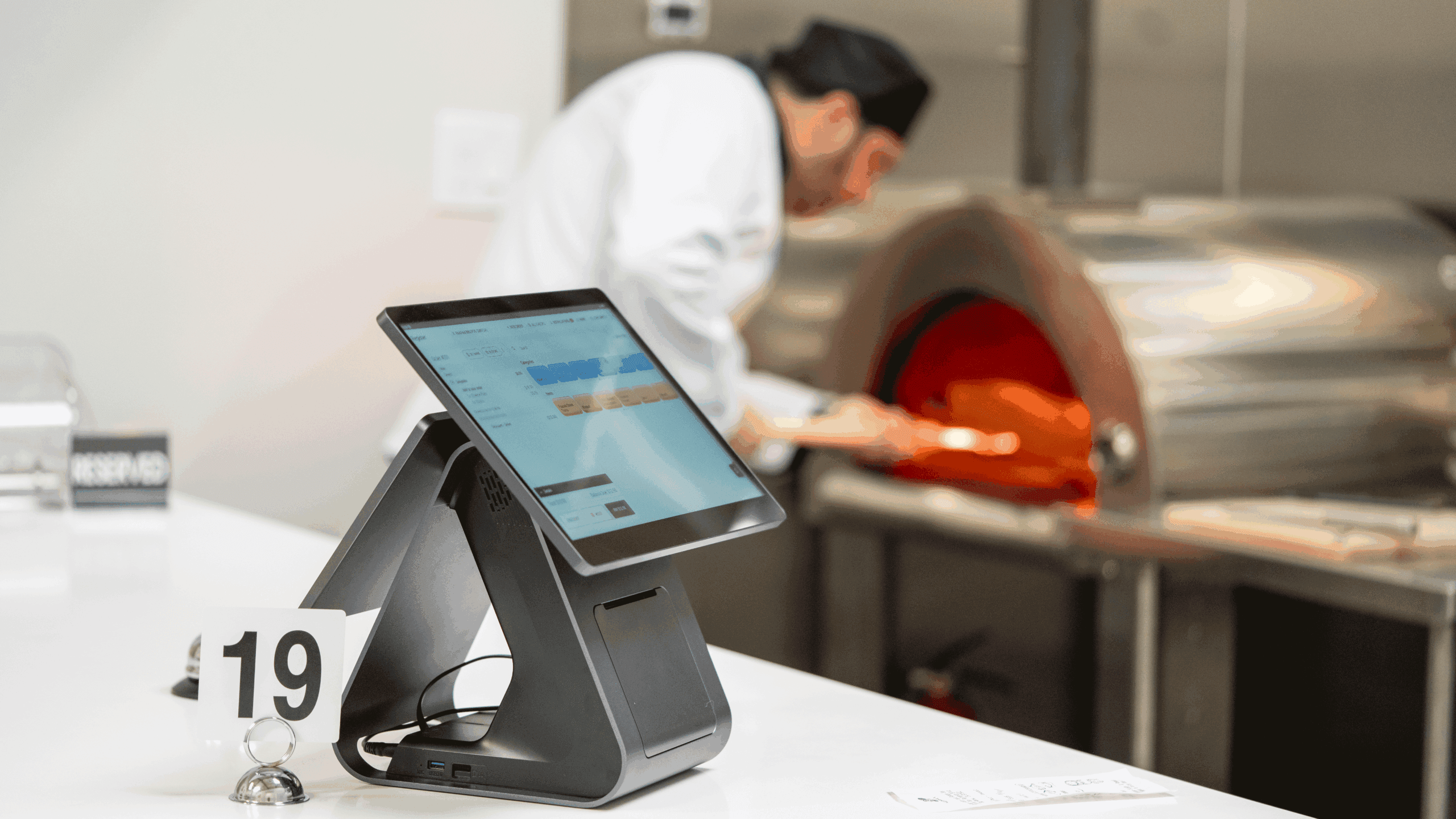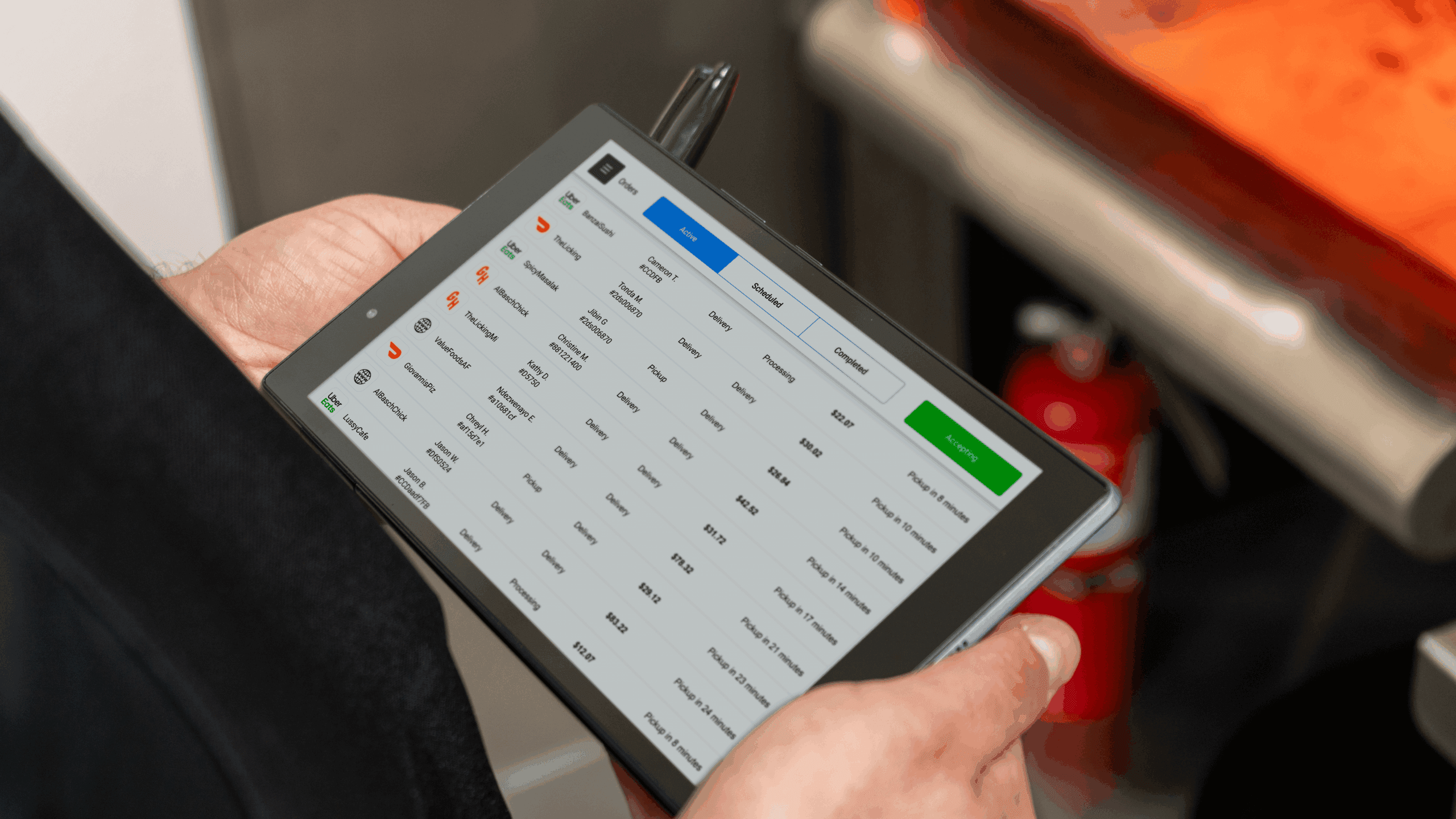- What’s a Restaurant Survey and Why Is It Important?
- What are the Benefits of Restaurant Surveys?
- How to Design Your Restaurant Survey
- Examples of Restaurant Survey Questions to Ask
- How to Evaluate the Results of Your Survey
Do you assume whoever smiles at you means they like you? Or do you think their feelings might be insincere?
Sometimes, when people are dining in a group setting, they might be pressured by others to react either positively or negatively.
For instance, if three people praise the Greek salad and call it exquisite, the fourth person who had better might agree just for the sake of not being left out.
So, how can you ensure you get the correct answer from your customers?
In this article, we’ll cover a restaurant survey’s benefits and how to use its results best to make concrete decisions.
It’s not just a questionnaire; it’s the backstage pass to boost customer satisfaction. So buckle up as we spill the beans on how these surveys are the secret sauce to keeping taste buds happy and customers returning for seconds!
What’s a Restaurant Survey and Why Is It Important?
A restaurant survey is your golden ticket to understanding what makes a customer’s dining experience a hit or a miss. It’s a quick Q&A where customers spill the beans on their meal, service, and vibe.
Now, why should you care?
Because it’s not just a form customers fill out; it’s your insider guide to the intricate dance of customer satisfaction. Picture it as your direct line to progress.
The feedback you receive isn’t merely a compliment; it’s the compass steering your restaurant toward perfection. Each response isn’t just an opinion; it’s a blueprint shaping the future of your establishment.
The next time you ask patrons to rate a dish or applaud a server, remember—you’re not just collecting thoughts; you’re sculpting the very essence of a delightful dining experience!
What are the Benefits of Restaurant Surveys?
Customer Satisfaction Boost
Restaurant surveys help identify what customers love and what irks them. Armed with this info, restaurants can fine-tune their offerings to meet customer expectations, leading to increased satisfaction.
Quality Improvement
Honest feedback is a reality check for restaurants. Whether it’s the tenderness of a steak or the speed of service, when you conduct restaurant surveys, you get a little extra TLC, paving the way for continuous improvement.
Menu Refinement
By analyzing customer survey feedback responses, restaurants can pinpoint crowd favorites and underperformers on the menu. This intel allows for strategic menu adjustments to cater to popular tastes.
Staff Performance Enhancement
Customer feedback isn’t just about the food. It sheds light on the performance of the waitstaff, helping restaurants recognize and reward exceptional service or address any shortcomings.
Brand Loyalty
When customers feel heard, they’re more likely to return. Surveys demonstrate a commitment to customer satisfaction, fostering a sense of loyalty among patrons who appreciate a responsive and attentive establishment.
Competitive Edge
In the highly competitive restaurant industry, staying ahead means staying in tune with customer preferences. Survey data provides a strategic advantage by helping restaurants understand their unique selling points and areas for differentiation.
Problem Identification
Surveys act as a spotlight on potential issues before they become major headaches. Whether it’s a recurring problem in the kitchen or a hiccup in service, early detection allows for prompt resolution.
Innovation Catalyst
Beyond addressing issues, surveys can also be a breeding ground for fresh ideas. Customers may provide insights into new dishes, themes, or experiences they’d like to see, inspiring innovation and keeping the restaurant vibe exciting.
Marketing Material
Positive survey results can serve as powerful testimonials. Restaurants can leverage satisfied customer quotes in marketing materials, boosting restaurant reputation and attracting new diners.
Data-Driven Decision Making
In the age of data, restaurant surveys provide valuable, quantifiable insights. Analyzing trends over time allows for informed decision-making based on real customer experiences rather than gut feelings.
How to Design Your Restaurant Survey
As a restaurant owner, crafting an effective restaurant survey requires a thoughtful approach to gathering valuable insights.
Here’s a step-by-step guide on how to design your restaurant survey:
Define Objectives
Clearly outline the goals of your survey. Are you seeking to gather feedback on a recent menu revamp, gauging service satisfaction, or exploring new concepts? Knowing your objectives will shape the restaurant service survey questions.
Keep it Concise
Respect your customers’ time. A brief survey is more likely to be completed. Aim for 10-15 questions, focusing on the most critical aspects of the dining experience.
Mix Question Types
Use a combination of multiple-choice, rating scales, and open-ended questions. This provides a balance between quantitative data and qualitative insights.
Start with Easy Questions
Begin with straightforward questions to engage participants. Questions about overall satisfaction or their favorite dish set a positive tone.
Segment Questions
Group questions logically. For instance, have food restaurant survey questions (questions related to your dishes), another on service, and a final one on ambiance. This helps participants mentally organize their responses.
Ask About Specifics
Instead of generic questions, delve into specifics. For example, rather than asking, “How was the service?” ask, “How would you rate the speed of service?”
Include Both Positive and Negative Phrasing
Balance the tone of your questions to avoid bias. For instance, mix questions like “What did you enjoy most?” with “Where can we improve?”
Offer a Variety of Rating Scales
Use scales that fit the type of question. For example, a 5-point scale for satisfaction but a “choose all that apply” for menu preferences.
Your Inbox, Your Rules!
Tailor your newsletter with the topics you're most interested in.
Include an Open-Ended Question
Allow customers to express themselves freely. An open-ended question, such as “Is there anything else you’d like to share?” can yield valuable insights.
Test the Survey
Before launching, test the survey with a small group to identify any confusing or ambiguous questions. Ensure the flow is logical and the survey is user-friendly.
Consider Timing
Choose an appropriate time for sending out surveys. Ideally, it should be soon after the dining experience while details are fresh in the customer’s mind.
Incentivize Responses
Consider providing a small incentive, like a discount on their next visit, to encourage participation.
Mobile-Friendly Design
Given the prevalence of smartphones, ensure your survey is easy to complete on mobile devices.
Privacy Assurance
Clearly communicate how you will use the data and assure customers of the confidentiality of their responses.
Regularly Review and Update
A restaurant is dynamic, and so should be your survey. Regularly review and update questions to align with changing objectives and customer expectations.
Remember, the key is to strike a balance between extracting valuable data and respecting your customers’ time and experience. A well-designed survey can be a powerful tool in enhancing your restaurant’s offerings and overall customer satisfaction.
Examples of Restaurant Survey Questions to Ask
- Overall Experience:
- How would you rate your overall experience at our restaurant?
- On a scale of 1 to 10, how satisfied were you with your visit?
- Food Quality and Presentation:
- Please rate the taste and quality of the dishes you ordered.
- How would you describe the presentation of your meal?
- Menu Preferences:
- Did you find a variety of options on the menu that appealed to you?
- Are there specific dishes you would like to see added or removed from the menu?
- Service and Staff Interaction:
- How would you rate the friendliness and professionalism of our staff?
- Did the staff attend to your needs promptly and courteously?
- Ambiance and Atmosphere:
- How would you describe the ambiance of our restaurant?
- Did the atmosphere contribute positively to your dining experience?
- Value for Money:
- Do you feel the prices are reasonable for the quality of food and service?
- How would you rate the overall value for money?
- Cleanliness and Hygiene:
- Did you find the restaurant clean and well-maintained?
- Were the restroom facilities up to your expectations in terms of cleanliness?
- Feedback on Specific Dishes:
- If you ordered a specific dish, how satisfied were you with it?
- Is there any particular dish that exceeded or fell short of your expectations?
- Likelihood to Recommend:
- How likely are you to recommend our restaurant to friends or family?
- Would you return to our restaurant for another dining experience?
- Suggestions for Improvement:
- Is there anything specific we could do to improve your next visit?
- Any additional comments or suggestions you would like to share?
Remember to adapt these questions based on the unique aspects of your restaurant, and consider mixing in some open-ended questions to capture nuanced feedback.
The goal is to gather actionable insights to guide improvements and enhance the overall dining experience.
How to Evaluate the Results of Your Survey
Evaluating the results of your restaurant survey is a crucial step in deriving meaningful insights and implementing improvements. Here’s a step-by-step guide on how to effectively evaluate survey results:
Quantitative Analysis
- Aggregate Scores: Calculate average scores for each question to get an overall quantitative view of customer satisfaction.
- Segment Responses: Break down scores by different aspects, such as food quality, service, ambiance, etc., to identify specific areas of strength and weakness.
Comparative Analysis:
- Benchmark Against Previous Surveys: If this isn’t your first survey, compare current results with previous ones to track changes over time.
- Industry Benchmarks: If available, compare your scores to industry benchmarks to understand how your restaurant fares in comparison to competitors.
Identify Trends:
- Look for Patterns: Identify recurring themes in both positive and negative comments. Patterns can reveal consistent strengths or persistent issues.
- Time-based Trends: Analyze responses over different time periods to spot trends, especially after implementing changes based on previous surveys.
Prioritize Areas for Improvement:
- Focus on Low-Scoring Areas: Pinpoint the questions or areas with lower satisfaction scores. These become your primary focus for improvement efforts.
- Impact Analysis: Consider the potential impact of addressing specific issues on overall customer satisfaction.
Qualitative Analysis:
- Thematic Analysis: Analyze open-ended responses for common themes or suggestions. These qualitative insights can provide context to quantitative scores.
- Sentiment Analysis: Assess the overall sentiment expressed in comments to gauge the emotional tone of customer feedback.
Customer Segmentation:
- Demographic Analysis: If you collected demographic information, segment results based on factors like age, gender, or frequency of visits. This can reveal preferences among different customer groups.
- New vs. Repeat Customers: Compare feedback between new and repeat customers to understand if satisfaction levels differ.
Review Actionable Feedback:
- Identify Actionable Insights: Focus on feedback that suggests specific actions. These could include menu changes, staff training, or improvements to the physical environment.
- Feasibility Analysis: Evaluate the feasibility of implementing suggested improvements, considering resource constraints and practicality.
Create an Action Plan:
- Set Priorities: Based on your analysis, prioritize areas for improvement. Determine which changes will have the most significant positive impact.
- Timeline: Develop a timeline for implementing changes, considering both short-term fixes and longer-term improvements.
Communicate Findings:
- Internal Communication: Share the survey findings and action plan with your staff. Ensure everyone is on the same page regarding the identified areas for improvement.
- Customer Communication: If applicable, communicate changes or improvements to your customers, demonstrating that their feedback is valued.
Follow-up Surveys:
- Measure Impact: Conduct follow-up surveys to assess the impact of implemented changes on customer satisfaction.
- Continuous Improvement: Use feedback from follow-up surveys to inform ongoing efforts for continuous improvement.
By following these steps, you can turn survey data into actionable insights, fostering a culture of continuous improvement in your restaurant and ensuring that customer satisfaction remains a top priority.
Using Restaurant Surveys to Improve Your Customers’ Dining Experience
As you evaluate your survey results, remember that the real power lies not just in the data but in the actionable insights derived. Prioritize improvements, set a clear action plan, and communicate the changes to both your team and your valued patrons.
And now, to simplify the process of restaurant guest feedback monitoring, consider leveraging the innovative solutions offered by Orders.co.
With in-site reviews and email product reviews seamlessly integrated, Orders.co empowers you to gather and analyze customer feedback effortlessly.
Stay attuned to the pulse of your diners, implement changes with agility, and watch as your restaurant transforms into a beacon of culinary delight!



